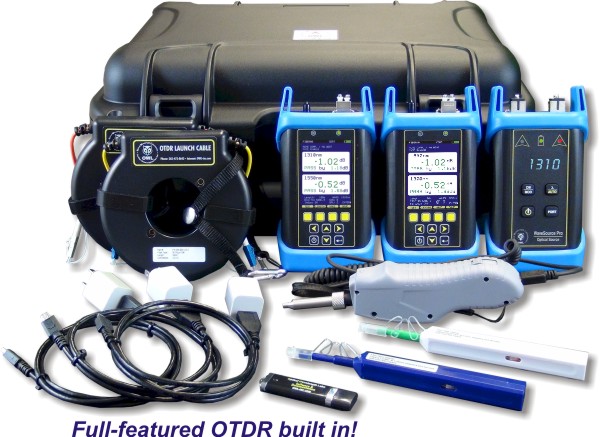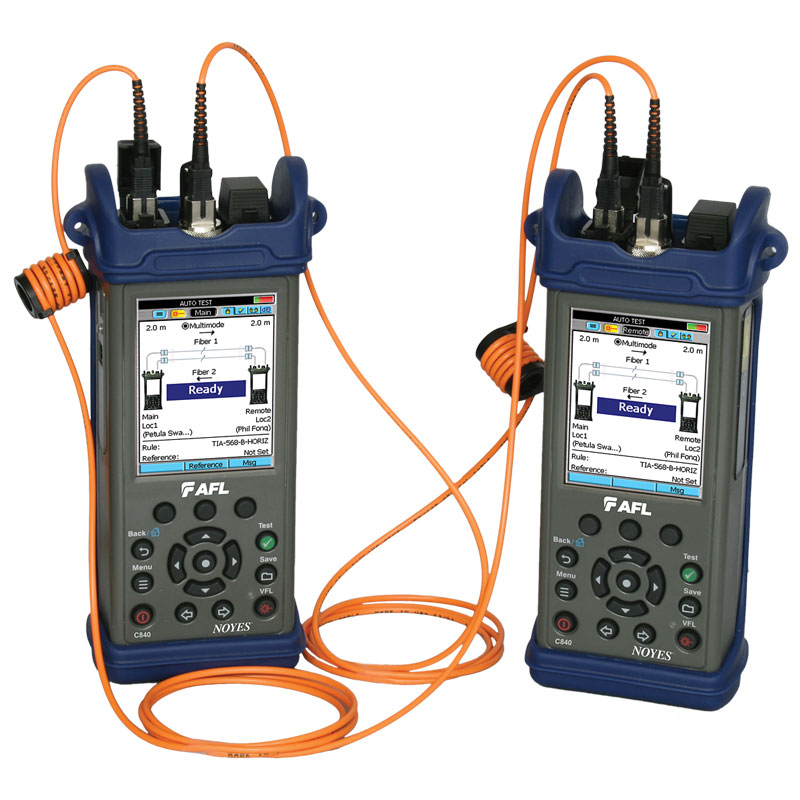Exploring fibre testing equipment and its role in network reliability
Understanding Exactly How an Optical Measurement System Enhances Precision in Industrial Applications
Optical measurement systems play a necessary function in boosting accuracy across various industrial applications. By leveraging innovative technologies such as laser interferometry and 3D imaging sensors, these systems supply high-resolution, non-contact dimensions. This ability reduces the risk of damaging delicate elements while making sure accuracy. However, the influence of these systems prolongs beyond simple dimensions. Discovering their advantages, applications, and future patterns discloses a complicated landscape of technology and challenges that values closer assessment.
The Basics of Optical Measurement Systems
Optical measurement systems function as crucial tools in different commercial applications, providing exact information collection and evaluation. These systems make use of light as a primary methods of measurement, leveraging optical principles to assess measurements, positions, and surface area qualities of things. They include components such as lasers, cameras, and sensors, which collaborate to catch high-resolution photos and data.
The modern technology allows non-contact dimensions, reducing the threat of damaging sensitive elements. Optical measurement systems are functional, finding energy in high quality control, setting up confirmation, and dimensional analysis throughout various industries. They are specifically effective in settings where traditional measurement methods might fall short, such as determining intricate geometries or observing quick movements.
As markets remain to develop, the combination of optical measurement systems will stay important for ensuring precision and performance, ultimately improving product high quality and functional performance in various making processes.
Key Technologies Behind Optical Measurement
Secret modern technologies such as laser interferometry strategies and 3D imaging sensing units play a crucial duty in the performance of optical measurement systems (robotic vision). These technologies enable accurate measurements and in-depth analysis in various industrial applications. Recognizing their capabilities is essential for harnessing the complete possibility of optical measurement systems
Laser Interferometry Techniques
Various laser interferometry methods have reinvented the field of optical measurement, supplying unmatched precision and precision in numerous commercial applications. These techniques make use of the interference of systematic light waves to measure range, variation, and surface area irregularities with nanometer-level accuracy. Typical approaches include Michelson interferometry, which divides a beam and examines phase changes, and Fabry-Pérot interferometry, known for its high resolution in determining small changes. Furthermore, laser Doppler interferometry utilizes regularity shifts to analyze rate, making it very useful in vibrant measurements. The adaptability of these strategies enables their integration into varied production procedures, boosting top quality control and making certain adherence to rigid tolerances. As a result, laser interferometry remains to play an important duty ahead of time industrial measurement criteria.
3D Imaging Sensors
Advancements in measurement modern technology have led to the advancement of 3D imaging sensing units, which play a substantial role in optical measurement systems. These sensors catch three-dimensional information via various methods such as triangulation, time-of-flight, and structured light. By properly rebuilding the shape and measurements of things, 3D imaging sensing units improve the accuracy of measurements in industrial applications. They give real-time responses, helping with top quality control and guaranteeing that elements fulfill strict requirements. Additionally, their capacity to operate in challenging atmospheres, such as varying illumination conditions, makes them important in producing procedures. As sectors significantly take on automation, the integration of 3D imaging sensors into optical measurement systems is expected to drive more renovations in efficiency and precision.
Benefits of Optical Measurement in Sector
Traditional measurement methods have long been the standard in commercial settings, optical measurement systems supply substantial benefits that improve precision and performance. These systems make use of light to record information, causing high-resolution dimensions that are typically unattainable with conventional techniques. The non-contact nature of optical measurements reduces the risk of damaging sensitive components during the assessment procedure. In addition, the rate of optical dimensions permits quick information procurement, facilitating prompt decision-making in busy commercial atmospheres.
Optical systems are adaptable, efficient in determining different materials and forms without the need for considerable recalibration. This adaptability adds to boosted workflow and performance. Furthermore, the automation possibility of optical measurement systems reduces human mistake, making sure consistent quality control. On the whole, the combination of optical measurement innovation stands for a modern shift in the direction of improved precision and dependability in industrial operations, inevitably resulting in improved item quality and operational efficiency.
Applications of Optical Measurement Systems

Optical measurement systems play an essential role in enhancing production process optimization by offering specific data for decision-making. These systems ensure top quality control guarantee through real-time tracking and evaluation of manufacturing metrics. As sectors increasingly embrace these modern technologies, their effect on efficiency and product reliability becomes obvious.
Manufacturing Refine Optimization
Enhancing production process performance is increasingly dependent on the combination of optical measurement systems. These systems give real-time data on different parameters, permitting producers to assess procedures with a high level of precision. By making it possible for precise measurements of dimensions, surface area qualities, and product buildings, optical measurement systems facilitate the identification of ineffectiveness and traffic jams in assembly line. The immediate responses from these systems empowers engineers to make informed decisions, causing optimized machining, assembly, and completing procedures. In addition, the ability to monitor conditions continuously permits adaptive modifications, decreasing downtime and waste. As industries go for greater productivity and lowered functional prices, optical measurement systems arise as essential devices for improving manufacturing process optimization.

Top Quality Control Assurance
The combination of optical measurement systems substantially influences quality assurance guarantee in industrial settings. These systems supply precise and non-destructive measurements, allowing manufacturers to spot problems and variances early in the manufacturing procedure. By using innovative imaging strategies, such as laser triangulation and interferometry, optical measurement systems assure that components meet rigid requirements. This facilitates real-time monitoring, minimizing waste and reducing the danger of damaged products getting to the market. In addition, the data accumulated can be examined to fine-tune manufacturing processes additionally, leading to continuous renovation. Inevitably, the fostering of optical measurement systems improves reliability and uniformity in top quality control, cultivating better confidence among stakeholders and consumers alike in the last items provided.
Situation Studies: Successful Applications
Many industries have actually efficiently incorporated optical measurement systems to improve their operational efficiency and product high quality. In the automobile sector, a prominent maker embraced a laser triangulation system to keep an eye on the positioning of car elements. This implementation considerably minimized assembly errors, leading to boosted safety and security and minimized expenses.
In the aerospace industry, a leading airplane maker used optical metrology for precision dimensions of generator blades, accomplishing a reduction in making tolerances and better performance criteria.
A customer electronics firm executed optical measurement technology Bonuses throughout the production of smart device screens, resulting in boosted quality control and a decline in defective items.
These case researches illustrate exactly how optical measurement systems not just enhance accuracy however also contribute to total operational performance, demonstrating their value across various industries. By addressing particular needs, these address systems have shown to be indispensable devices in modern-day industrial applications.
Obstacles and Limitations of Optical Measurement
While optical measurement systems offer significant advantages in different industrial applications, they are not without their difficulties and limitations. One major worry is sensitivity to ecological conditions, such as temperature changes, moisture, and dirt, which can adversely impact measurement precision. In addition, optical systems commonly require accurate positioning and calibration, making them prone to human error during setup and procedure. An additional constraint is the potential for disturbance from ambient light, which can distort measurements and require complicated filtering system methods. In addition, particular materials and surfaces might present problems, as reflective or clear qualities can bring about irregular analyses. The expense of high-grade optical elements and systems can also be an obstacle for some sectors, restricting prevalent fostering. Specialized training is often needed for personnel to properly operate and maintain these systems, adding to the total complexity and operational difficulties.
Future Patterns in Optical Measurement Innovation
As advancements in technology remain to shape commercial processes, the future of optical measurement systems is positioned for substantial advancement. Arising trends indicate a change in the direction of boosted combination of expert system and artificial intelligence, making it possible for systems to examine information in real-time, determine patterns, and enhance decision-making procedures. Furthermore, the growth of miniaturized sensing units and advanced optics is expected to bring about even more small and flexible measurement solutions, making them accessible for a larger series of applications.
Additionally, the consolidation of 3D imaging and high-resolution abilities will permit unmatched precision in measurements, which is vital for markets such as aerospace and automotive. The promote automation and Industry 4.0 will certainly likewise drive the demand for optical measurement systems that can quickly interface with various other innovations. As these fads unfold, optical measurement systems will likely end up being integral to accomplishing better efficiency and precision throughout numerous industrial sectors.

Often Asked Inquiries
How Do Optical Measurement Systems Contrast to Traditional Measurement Methods?
Optical measurement systems supply higher precision and speed compared to conventional techniques - robotic vision. They decrease human mistake, improve information collection performance, and provide real-time results, making them increasingly favored in numerous commercial applications for exact measurements
What Industries Advantage one of the most From Optical Measurement Systems?
Optical measurement systems greatly benefit markets such as aerospace, automotive, and electronic devices. Their ability to navigate here give high-precision measurements improves quality control, minimizes manufacturing errors, and improves general performance, making them crucial in competitive production environments.
Can Optical Measurement Systems Be Custom-made for Specific Applications?
Optical measurement systems can undoubtedly be customized for details applications. By changing criteria such as wavelength, resolution, and calibration techniques, markets can customize these systems to meet special accuracy and precision demands properly.
What Is the Maintenance Demand for Optical Measurement Systems?
The upkeep needs for optical measurement systems usually consist of normal calibration, cleaning of optical parts, and software program updates. Abiding by these techniques warranties accuracy, reliability, and durability of the measurement tools in numerous applications.
How Do Environmental Variables Affect Optical Measurement Accuracy?
Environmental aspects, such as temperature level variations, moisture, and dust, greatly impact optical measurement accuracy. These elements can distort light courses and disrupt sensing unit analyses, eventually compromising the reliability and precision of measurements in industrial setups.